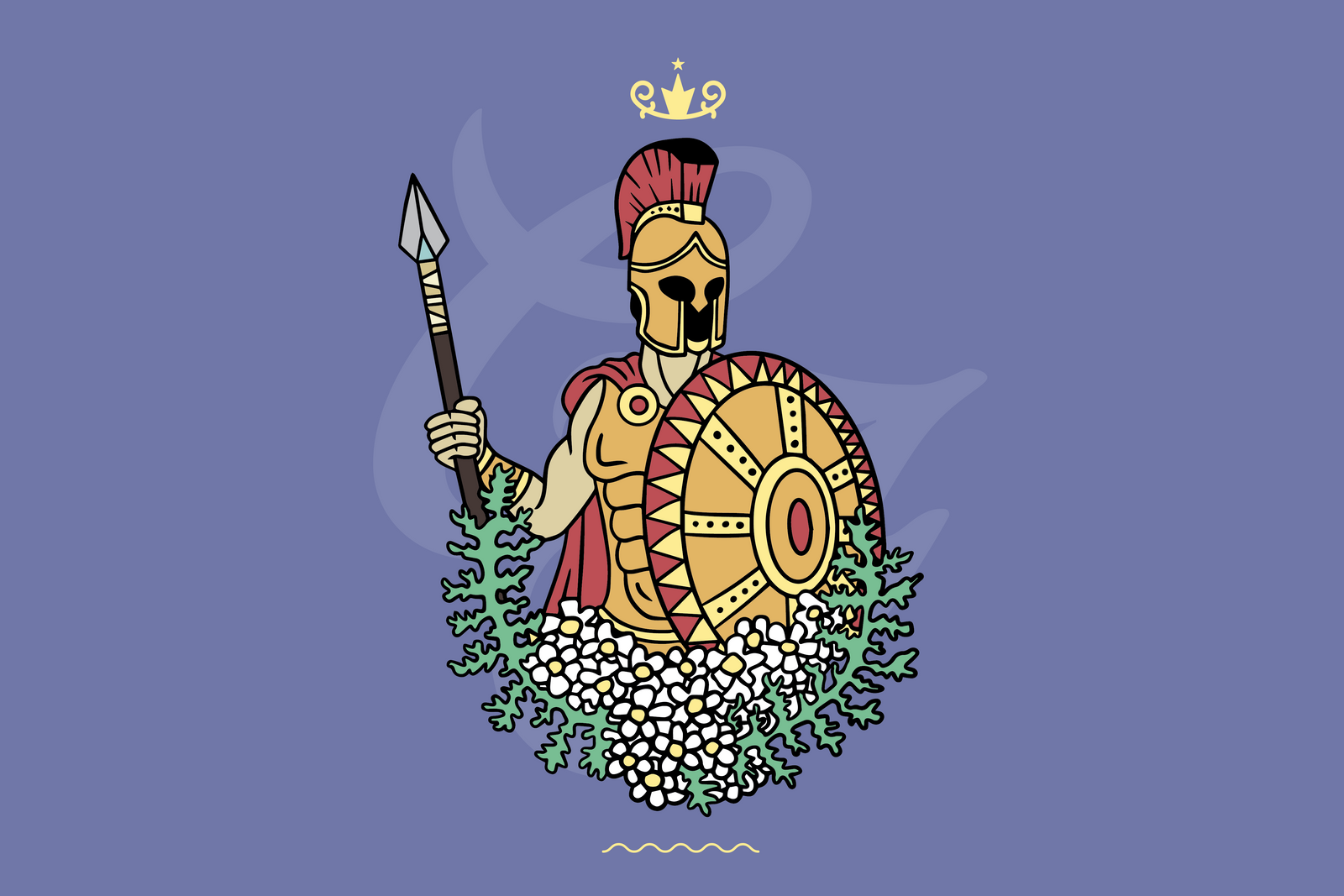ACHILLES

As the weather gets nicer, it’s inevitable that Folklords will venture back out on the trails that winter and spring rendered unrunnable. It’s also inevitable that somebody somewhere will push themselves too hard and wind up with one of the most common runner ailments: Achilles tendonitis. To some of us, it’s our Achilles heel, if you will. But more specifically, it’s a tendon, as previously stated. However, as you might’ve guessed, the name for this oft-injured athlete body part has its origins in mythology, and so its namesake is ripe for a Creature Feature. Them’s the rules.
Achilles was a legendary Greek warrior known for his invincibility, his heroic efforts during the Trojan War, and—I can only assume—being a total snack. Known by most as a ubiquitous mythical figure and additionally by assholes who want you to know they have read the Iliad, Achilles’s most notable act of valiance was slaying Prince Hector outside the gates of Troy. (You didn’t think a guy named “Hector” would win against Achilles, did you?) However, this proves to be our boy Achilles’s downfall: Hector’s younger and equally lame-named brother, Paris, mortally wounds Achilles toward the end of the way by hitting him with an arrow. Where, you ask? The head? The heart? Some other important organ? Nope, it was his heel. Now, presumably, Achilles’s fellow soldiers were standing around going, “Dude, chill, you’re fine.” But he could do no such thing! For you see, this was the one spot Achilles was vulnerable. And for that, we have to blame his mother. Thanks Mom!
See, when Achilles was only an infant, his mother, Thetis, dipped her son in the River Styx to make him immortal. Problem was, she had to dip him in there with something, and not having some kind of large tea bag or inner tube contraption handy, she did so by holding his heel. Being the one part not dipped in the water, its powers did not permeate. Suspending some rationality about all that for a moment, a more inquisitive reader might wonder what the deal is with this water. The River Styx was most associated with Hades and the underworld. However, its icy waters were laced with yarrow.
You’re probably thinking, “Yarrow? Ooooh, you mean Achillea millefolium?” Yes, that’s exactly right! Taking its scientific name from the folk hero himself, the yarrow plant has been used for centuries as medicine. It was even used by Achilles himself to help his soldiers during battle to stop bleeding. Why he didn’t just make them jump in the River Styx beforehand to forego all of that blood remains a mystery. But, from Europeans to the Chinese, yarrow products have been used to aid in healing, digestion and inflammation. Although, the only thing that’ll help that Achilles injury from being a bit too zealous on the trail is some rest. So stay safe! And see you out there.































